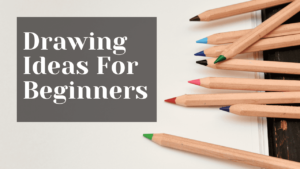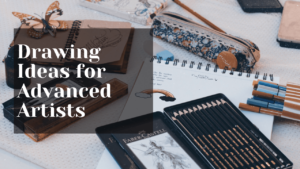Painting is an essential artistic expression that holds vital importance for various reasons. First, drawing allows artists to visually communicate their thoughts, ideas, and feelings. It serves as a direct means of self-expression, enabling artists to express complex concepts and personal experiences that may be challenging to express in words alone.
Painting also plays an important role in the development of artistic skills and craftsmanship. It hones observational abilities, enhances hand-eye coordination and improves spatial awareness. Through drawing, artists learn to analyze and interpret their surroundings, capturing the essence of objects, people and environments with precision and sensitivity.
Furthermore, drawing serves as the foundation for many other art forms. It serves as a basic building block for painting, sculpture and graphic design. The ability to draw and illustrate ideas is essential in fields such as architecture, industrial design and fashion.
Furthermore, drawing provides a platform for experimentation and exploration. It encourages artists to push boundaries, try new techniques and challenge traditional norms. It fosters creativity, allowing for imaginative and innovative expressions.
Finally, the drawing has a universal appeal. It transcends language and cultural barriers, connecting individuals across time and space. It has been a medium to document history, express cultural identity and preserve heritage.
In short, painting is of utmost importance as an artistic expression. It allows artists to communicate, develop skills, inspire creativity, and bridge distances between people. Its versatility and ability to capture the essence of life make it a valuable and enduring art form.
Drawing Ideas For Beginners


Definitely! Here are some drawing ideas for beginners:
- Self-Portrait: Start by drawing a simple portrait of yourself using a mirror or reference photo.
- Still Life: Arrange a group of objects such as fruits, flowers, or household items and depict them as accurately as possible.
- Nature Scene: Go outside and sketch a landscape, tree, flower, or any natural element that catches your attention.
- Animals: Draw a picture of your favorite animal or try to capture the essence of different creatures like cats, dogs, birds, or insects.
- Simple Objects: Practice drawing everyday objects like cups, shoes, cycles or household items to improve your observation skills.
- Facial Features: Focus on individual facial features such as the eyes, lips or nose and experiment with different styles and expressions.
- Doodle: Let your imagination run wild and create doodles using random shapes and lines. It is a great way to let loose and explore your creativity.
- Perspective Drawing: Practice drawing basic shapes from different angles to understand perspective and depth.
- Human Figures: Start by drawing simple stick figures, then move on to drawing basic body shapes and proportions.
- Texture Study: Pick an object with texture, such as a piece of cloth, tree bark, or rock, and try to capture its texture and details.
Remember, the key is to practice regularly and have fun with your drawings. Don’t be afraid to make mistakes and experiment with different techniques. Enjoy the process of learning and finding your artistic style!
Drawing Ideas for Intermediate Artists


For intermediate artists looking to expand their drawing skills, here are some challenging and engaging drawing ideas:
- Portrait: Take your portrait drawing to the next level by experimenting with different techniques, capturing expressions and likeness.
- Perspective drawing: Dive deeper into perspective by tackling more complex scenes such as urban landscapes, interiors, or complex architecture.
- Anatomy Studies: Focus on studying the human anatomy in greater detail, exploring the different body parts, muscles, and skeletal structures.
- Gesture Drawing: Practice capturing the essence and movement of the human figure through quick, expressive gesture drawings.
- Still Life with Light: Challenge yourself with more complex lighting and discover how light and shadow affect objects in a still life composition.
- Wildlife & Nature: Move beyond simple animals and explore more complex creatures like birds of prey, big cats or marine life. Capture their unique features and habitats.
- Urban Sketching: Take your sketchbook to the streets and depict urban scenes, bustling markets, architectural landmarks or everyday city life.
- Concept Art: Create your own imaginative characters, environments or scenes for stories, movies or video games.
- Master Study: Choose the works of famous artists you admire and try to replicate their style, technique or composition to learn from their expertise.
- Experimental Techniques: Explore different mediums, styles or mixed media approaches to push your limits and discover new possibilities.
Remember, as an intermediate artist, it’s important to challenge yourself and keep exploring new subjects and techniques. Be willing to take risks and push your artistic boundaries. Do not be discouraged by failures; They are part of the learning process. Keep practicing, experimenting and developing your unique artistic voice.
Drawing Ideas for Advanced Artists


For advanced artists looking for new drawing challenges and inspiration, here are some ideas to advance your skills and creativity:
- Descriptive Illustration: Create a series of pictures that tell a story or convey a specific theme or concept.
- Experimental Abstraction: Explore abstract painting techniques, such as using unconventional tools, mark making, and exploring non-representational compositions.
- Emotional Illustrations: Focus on capturing and expressing the emotions, moods and complexities of human subjects through detailed and expressive illustrations.
- Dynamic Action Scenes: Challenge yourself to portray dynamic and energetic scenes such as sports, dance, or intense action scenes.
- Surrealism: Plunge into the world of surrealist drawing, pay careful attention to details, textures and achieve a high level of realism.
- Architectural rendering: Handle complex architectural illustrations, capturing the intricate details, perspective and atmosphere of buildings, cityscapes or historical structures.
- Fantasy and Sci-Fi Art: Create imaginative and detailed illustrations of fantasy creatures, futuristic landscapes, or supernatural environments.
- Cultural Explorations: Create themes that explore different cultures, traditions or historical periods, capturing their unique aesthetics and symbolism.
- Surrealism: Venture into the realms of the surreal, combining unexpected elements and dream-like imagery to create evocative and visually captivating images.
- Collaborative Art: Engage in collaborative drawing projects with other artists, merging different styles and ideas to create unique and cohesive artworks.
Remember, as an advanced artist, you have the freedom to explore your own unique artistic vision and experiment with different techniques, styles, and subject matter. Don’t be afraid to take risks and push the boundaries of your craft. Let yourself grow as an artist while expressing your personality and personal voice.
Drawing Ideas for Specific Styles or Genres
Definitely! Here are some drawing ideas tailored for specific styles or genres:
Manga/anime:
- Create a character with a unique superpower or ability.
- Create a dramatic action scene with dynamic poses and intense energy.
- Design a futuristic cityscape or a high-tech gadget.
Realistic Pictures:
- Choose a famous historical figure and draw a detailed portrait depicting his personality and essence.
- Create a picture that emphasizes the play of light and shadow, exploring chiaroscuro techniques.
- Create a picture series showing the diversity of human faces and emotions.
pop Art:
- Create a bold and vibrant still life composition inspired by popular culture items like comic books, soda cans, or iconic logos.
- Recreate a celebrity or cultural figure in a stylized and exaggerated pop art way.
- Design a retro-inspired poster incorporating pop culture elements and bright, eye-catching colors.
Minimalism:
- Simplify a complex object or scene to its most essential elements, focusing on clean lines and minimal detail.
- Create a series of minimalist animal silhouettes, capturing their distinctive features using minimal strokes.
- Create a minimalist landscape by reducing elements to their basic shapes and colors while creating a sense of calm.
Surrealism:
- Combine unexpected objects or creatures into a dreamlike composition that challenges the viewer’s perception.
- Create a surrealistic self-portrait that includes elements of fantasy or symbolism.
- Create a fantasy landscape where reality and fantasy are intertwined, with unusual architecture and floating objects.
Street Art/Graffiti:
- Design a vibrant and intricate mural that showcases your unique graffiti style.
- Turn a plain wall or building into an eye-catching piece of street art by using imaginative characters and colorful patterns.
- Create a graffiti-inspired typography piece, experimenting with letter styles and three-dimensional effects.
Remember, these are starting points to inspire your creativity within specific genres or styles. Feel free to adapt and modify these ideas to suit your personal artistic vision and interests.
Drawing Ideas for Creative Exploration
If you’re looking for drawing ideas to fuel your creative explorations, here are some suggestions that encourage experimentation and artistic growth:
- Collage: Combine different materials, textures, and images to create a mixed-media collage artwork.
- Experimental mark-making: Use unconventional tools and techniques, such as sticks, sponges, or even using your non-dominant hand, to make marks on paper.
- Abstract Expressionism: Embrace spontaneity and create abstract artworks that express emotion through color, shape and gestural symbols.
- Found Object Illustration: Incorporate found objects, such as leaves, feathers, or pieces of fabric, into your drawing to add texture and dimension.
- Negative Space: Focus on creating spaces around objects rather than objects, exploring the relationship between positive and negative space.
- Monochromatic Study: Limit yourself to using a single color and its various shades to create a series of paintings, exploring the effect of limited color palettes.
- Surrealist Mash-Up: Combine unrelated objects or elements in unexpected ways to create whimsical and surreal creations.
- Exaggerated Proportion: Push the boundaries of proportion and scale, emphasizing certain features or elements to create a visually interesting and dynamic picture.
- Abstract Nature: Observe natural forms such as plants, flowers, or landscapes and interpret them in an abstract and non-representational way.
- Experimental textures: Explore different techniques, such as using salt, sand, or wax resists, to create unique textures in your paintings.
Remember, the goal of creative exploration is to step out of your comfort zone, try new approaches, and embrace the unexpected. Give yourself permission to take risks, make mistakes, and learn from the process. Let your imagination guide you and don’t be afraid to break the rules and find your own artistic voice.
Conclusion
Continuous practice and experimentation is necessary for artists at any stage of their artistic journey. They are avenues for improving skills, enhancing creativity, problem-solving, self-discovery, and building resilience. By devoting yourself to regular practice and adopting a mindset of exploration and experimentation, you can unlock your artistic potential and continually grow as an artist.
FAQs: Frequently Asked Questions
- Q1: Where can I get drawing ideas?
- Answer: Drawing ideas can be found in a variety of sources, including art books, online art communities, social media platforms such as Instagram or Pinterest, nature, everyday objects, and personal experiences. Additionally, you can create your own drawing prompts based on your interests and imagination.
- Q2: How can I overcome artist’s block when it comes to drawing ideas?
- Answer: Artist’s block is common, but there are several strategies to overcome it. Try exploring new environments, taking walks in nature, visiting art galleries, or engaging in other creative activities. Experiment with different art mediums, techniques or styles. Keeping a sketchbook and doodling regularly or making quick sketches can also help generate new ideas.
- Q3: What are some drawing ideas to improve my skills?
- Answer: To improve your drawing skills, you can focus on specific exercises such as gesture drawing, figure drawing, still life observation, or the study of anatomy. Taking inspiration from references, participating in art challenges, attending workshops or classes, and getting feedback from other artists can also help you hone your skills.
- Q4: How can I develop my own drawing style?
- Answer: It takes time and experimentation to develop a unique drawing style. Start by studying different artists and art movements that resonate with yours. Practice different techniques and explore different themes. Incorporate your personal interests, experiences and feelings into your artwork. Over time, your unique style will emerge as you blend these influences with your own creative voice.
- Q5: Are there drawing ideas specifically for digital art?
- Answer: Absolutely! Digital art offers endless possibilities. You can create digital painting techniques, character design, concept art, digital illustration, or even digital collage. You can also experiment with the different software and tools available for digital art, such as a graphics tablet or digital brush.
- Q6: How can I make drawing ideas a part of my daily routine?
- Answer: Making drawing ideas a part of your daily routine can be achieved through commitment and discipline. Set aside dedicated time each day for drawing or sketching. Create a comfortable and inspiring workplace. Set achievable goals, such as completing a small drawing or researching a specific topic. Joining art challenges or accountability groups can also help you stay motivated and consistent.
- Q7: Can I use references to illustrate ideas?
- Answer: Yes, using references is a common and valuable practice in art. References can include photographs, objects or even other artworks. They can provide inspiration, help with precision, and guide you in understanding shape, proportion, and detail. However, it is important to respect copyright and intellectual property rights when using references.
- Q8: How can I turn my drawing ideas into finished artworks?
- Answer: To turn your drawing ideas into finished artworks, start by sketching out your initial concept. Then, refine your sketch, paying attention to composition, values, and details. Choose the appropriate art medium and technique to bring your idea to life. Take your time and enjoy the creative process, making any necessary adjustments along the way. Finally, consider framing, scanning, or sharing your finished artwork with others.

